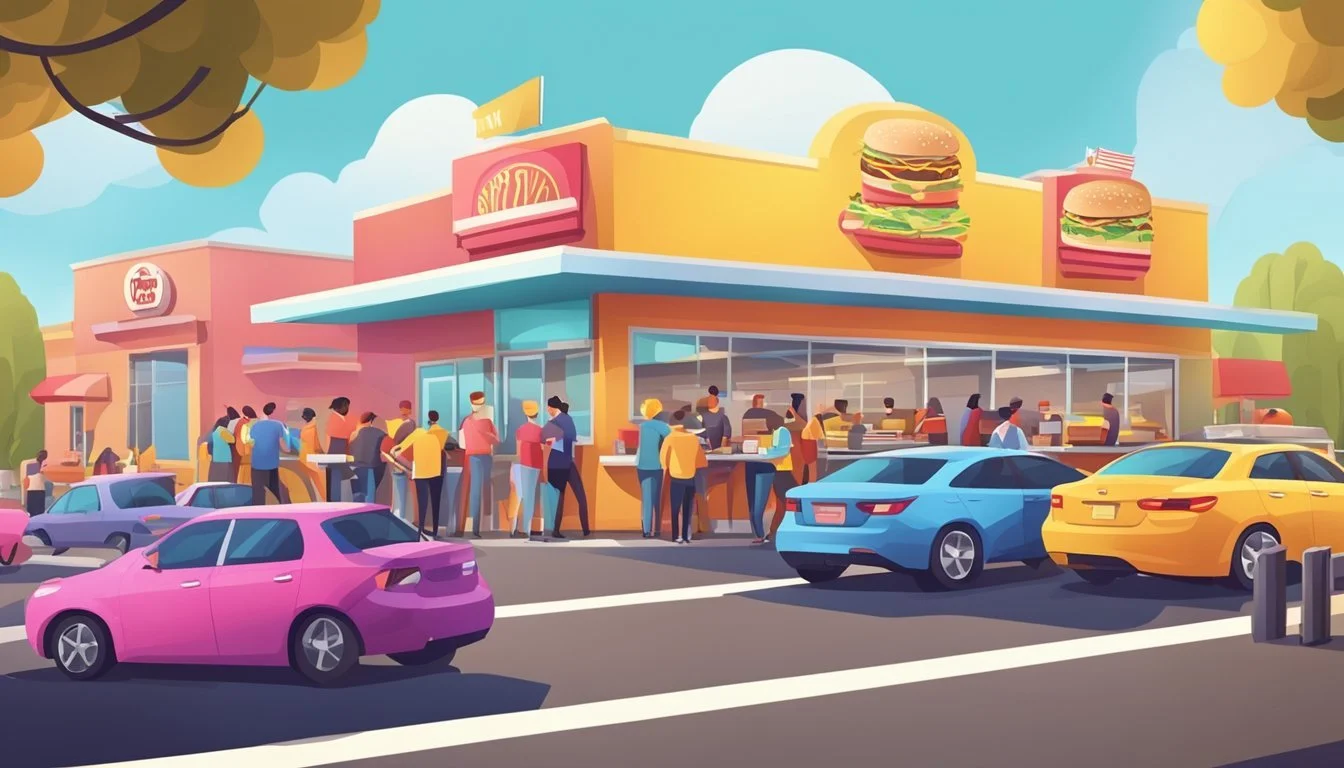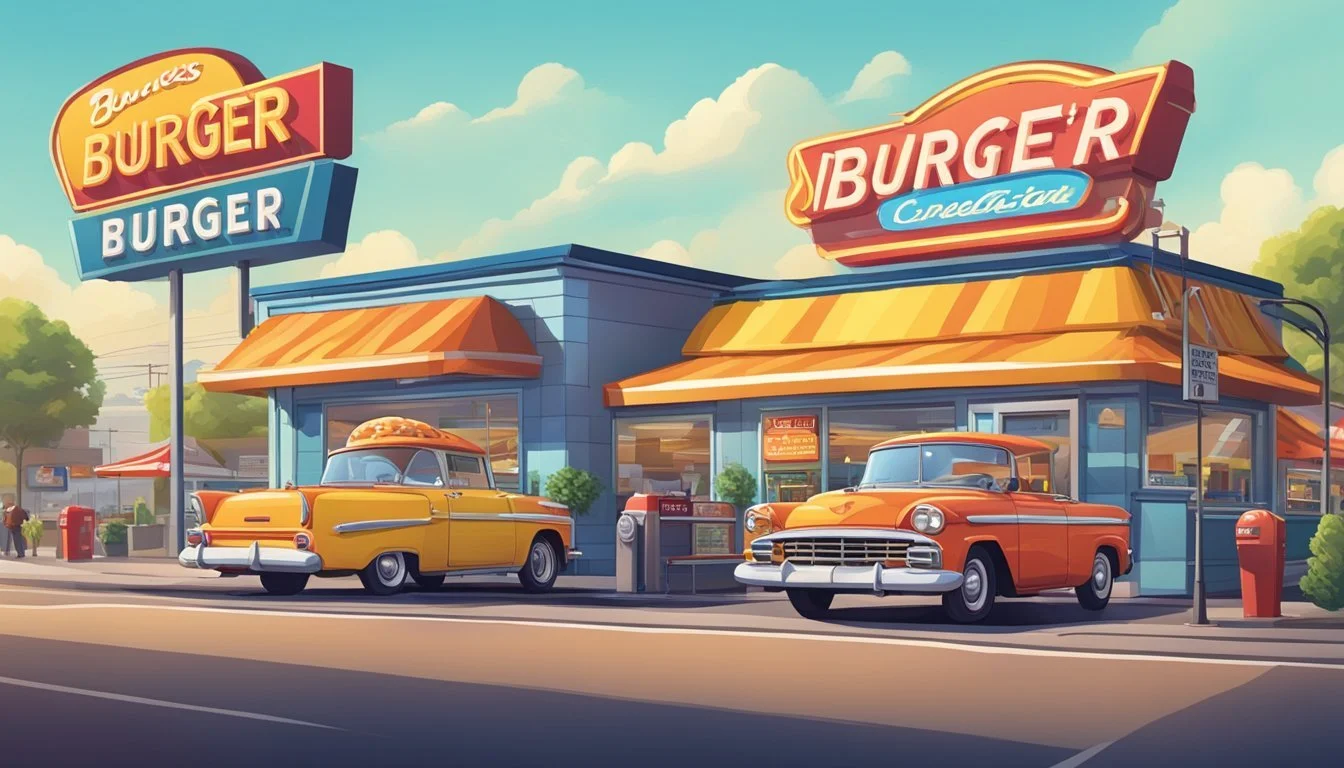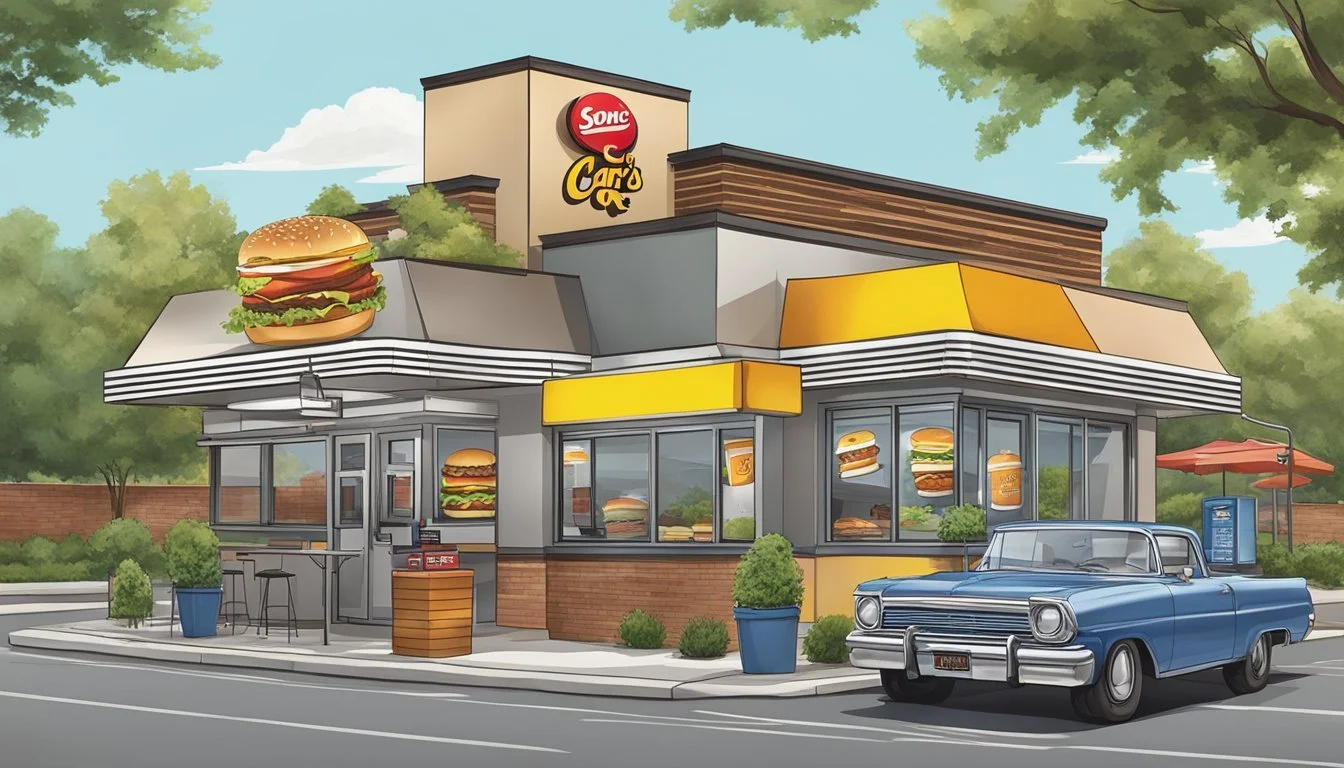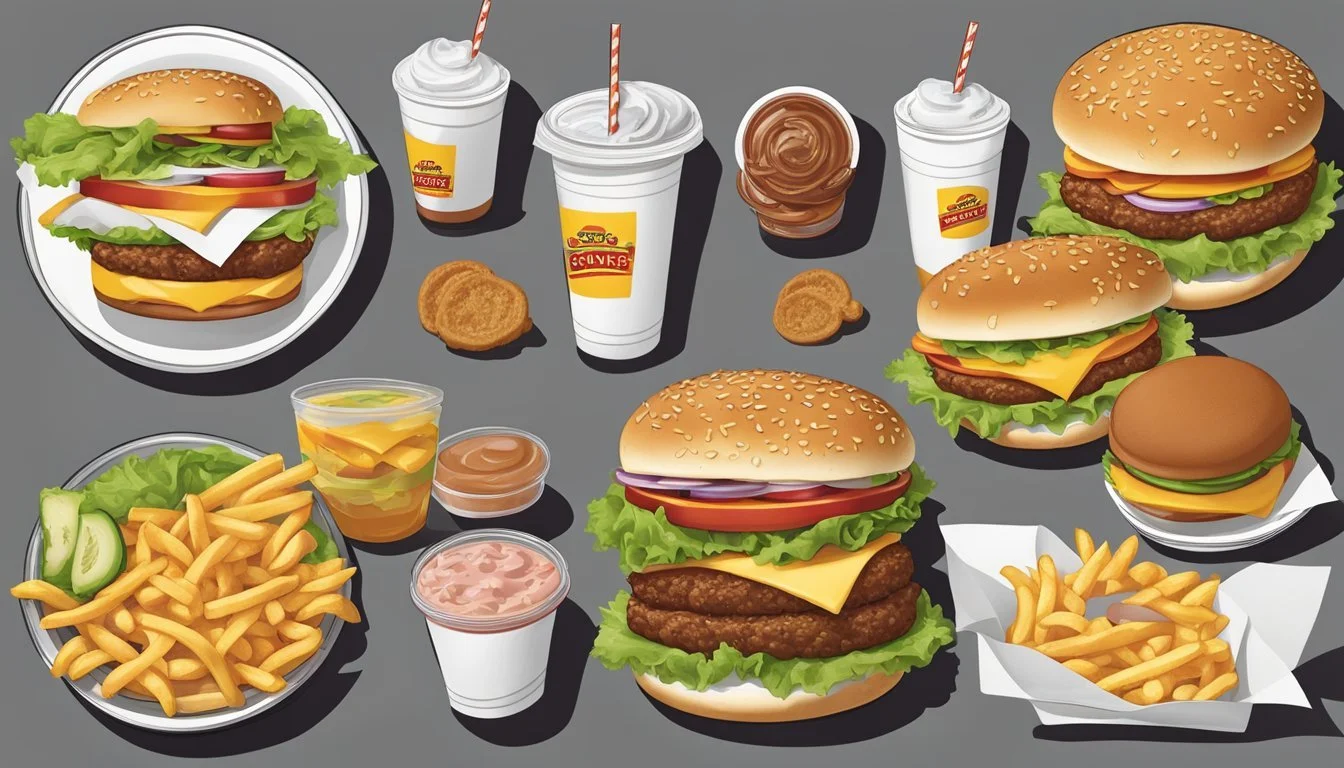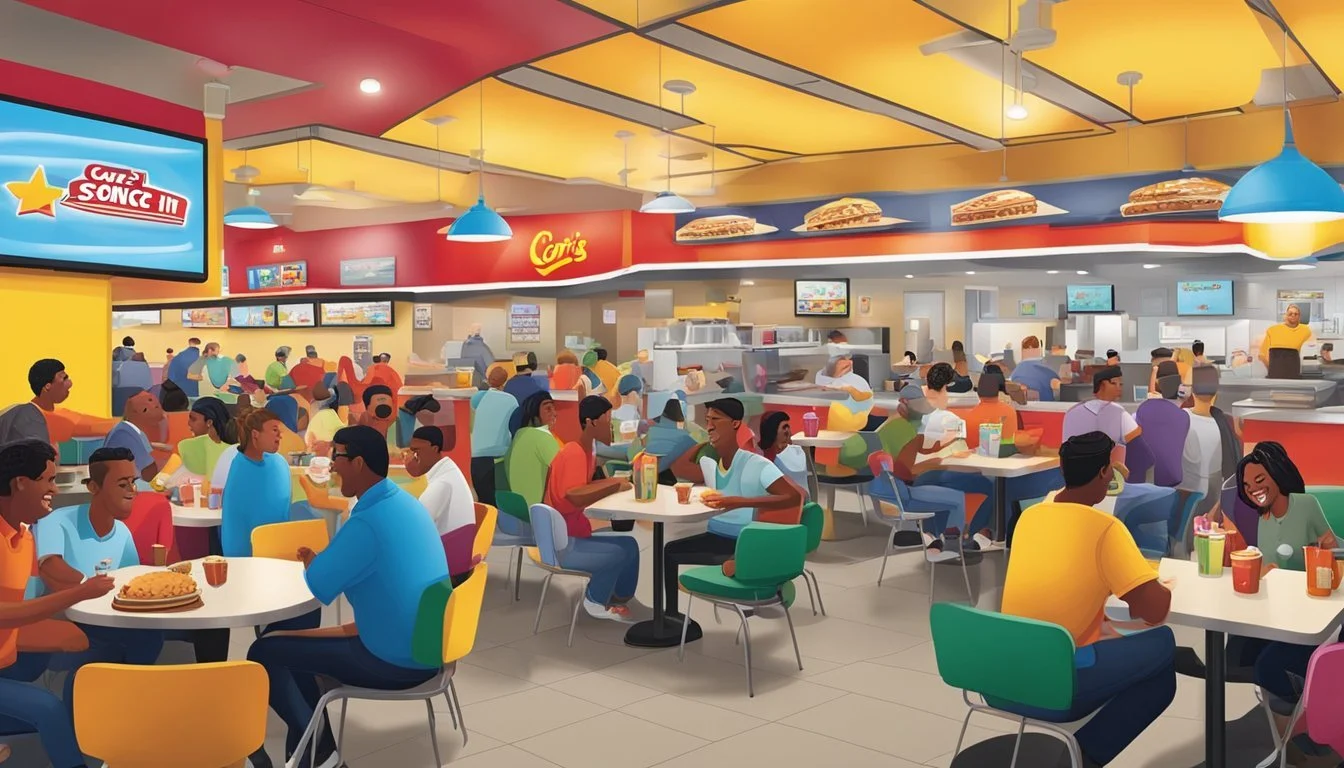Carl's Jr. vs Sonic Drive-In
The Ultimate Burger Showdown
When it comes to satisfying a burger craving, few fast-food chains are as iconic as Carl's Jr. and Sonic Drive-In. These establishments have cultivated distinctive identities in the American fast-food landscape, tempting patrons with their unique twists on the classic hamburger. Carl's Jr., known for its charbroiled burgers, positions itself with a slightly more premium fast-food experience, boasting a West Coast flair and a wide presence across several states. Its menu typically includes thicker patties and a variety of innovative toppings aimed at burger enthusiasts looking for a heftier meal.
On the other hand, Sonic Drive-In, with its nostalgic drive-in concept, offers a different dining experience featuring carhops on skates and a broad menu that goes beyond burgers. While Sonic may have a competitive edge with its unique service style and broader menu offerings, its burgers are a crucial part of its appeal, offering a more traditional fast-food burger that many Americans have grown up with. The choice between these two burger joints may come down to more than just the taste of their offerings - it can also hinge on the overall dining experience and the specific cravings of the customer.
The Burger Showdown
In the fast-food landscape, burgers reign supreme, and two heavyweights, Carl's Jr. and Sonic Drive-In, stand out for their distinctive offerings and branding strategies. This showdown delves into their histories, brand presence, and cultural impact to discern which burger joint has the edge.
History of Carl's Jr. and Sonic Drive-In
Carl's Jr. began as a humble hot dog cart in Southern California during the year 1941. Founded by Carl Karcher, it quickly evolved, and by 1945, the cart blossomed into the first Carl's Jr. restaurant, a place where the Famous Star burger would later become iconic. Meanwhile, Sonic Drive-In, with its origins in Shawnee, Oklahoma, commenced operations in 1953, fashioned by Troy Smith. It carved a niche by resurrecting the drive-in dining concept, accompanied by carhops, often on roller skates, delivering food directly to customers' vehicles.
Brand Presence and Expansion
Carl's Jr. has made a significant mark, particularly on the West Coast of the United States, boasting over 1,100 locations. Its expansion has been aggressive, with their signature charbroiled burgers forging a path into international markets. Sonic Drive-In, on the other hand, operates more than 3,500 restaurants and spans across the United States, with a particularly strong presence in the Southeast and Midwest. It is recognized for its diverse menu and drive-in format, tempting diners with a nostalgic experience.
Cultural Impact and Branding
Carl's Jr.'s branding has historically been provocative, with advertisements often featuring models and celebrities indulging in their large, decadent burgers. This approach frequently placed them into the conversation, especially during the 2000s. However, their controversial advertising methods have seen a shift in recent years. Sonic Drive-In maintains brand recognition through its ensemble of humorous commercials and an emphasis on variety and customization. Their advertising efforts shine during events like National Cheeseburger Day, harnessing these occasions to reinforce their brand's relationship with burger enthusiasts.
Menu Comparison
In assessing Carl's Jr. and Sonic Drive-In, the menu stands out as a primary factor for comparison. Each establishment offers a variety of burgers complemented by a selection of unique and classic toppings, as well as other fast food staples.
Signature Burgers
Carl's Jr. is known for The Really Big Carl, a hefty offering boasting 1,180 calories. It is a powerhouse of a burger with a notable calorie count. Conversely, Sonic Drive-In offers the Supersonic Bacon Double Cheeseburger with Mayo, notable for its rich bacon flavor, bringing 1,140 calories to the table.
Carl's Jr.:
The Really Big Carl
Sonic Drive-In:
Supersonic Bacon Double Cheeseburger with Mayo
Burger Variety and Toppings
Both chains provide a wide selection of burgers, including cheeseburgers, hamburgers, and more. Customers at Five Guys, which is not one of the chains we're comparing but relevant for context, enjoy a plethora of topping choices such as lettuce, pickles, and grilled mushrooms, at no additional cost. However, in terms of direct comparison:
Carl's Jr. offers a range of burgers, including those with unique toppings and sauces.
Sonic Drive-In sets itself apart with customizability, offering various toppings that can enhance the flavor profile of their burgers.
Beyond Burgers: Other Menu Offerings
Both restaurants extend beyond just burgers with an array of menu items including fries, sandwiches, and more. While Carl's Jr. also offers a selection of chicken sandwiches, Sonic Drive-In's menu is diverse, featuring hot dogs, sliders, and a comprehensive breakfast menu.
Carl's Jr.:
Extensive burger options, chicken sandwiches
Sonic Drive-In:
Hot dogs, sliders, breakfast menu options
Specialty Items and Limited-Time Offers
Specialty items and limited-time offers are a way both Carl's Jr. and Sonic Drive-In keep their menus exciting. While the details of these offers change with time, they often include twist on classic menu items or entirely new creations that bring customers an opportunity to try something different.
Carl's Jr.:
Known for introducing inventive limited-time sandwiches and burgers.
Sonic Drive-In:
Offers seasonal items and occasionally rotates their selection of specialty burgers and other menu items.
Quality and Taste
Carl's Jr. and Sonic Drive-In both have distinct approaches to their burgers, focusing on ingredient selection and unique flavor profiles which cater to different customer preferences.
Burger Ingredients and Freshness
Carl's Jr. is known for its use of charbroiled patties and has a history of implementing Angus beef, suggesting a focus on a more premium burger experience. However, it should be noted that some consumers have pointed to a noted change in the quality of Angus beef over time. Sonic Drive-In burgers are not primarily marketed as premium but are part of a versatile menu offering. Freshness at Sonic is consistent with the fast-food industry standards, and their burger's inclusion in various rankings indicates a reliable level of quality.
Flavor Profiles
The Burger Build is a pivotal aspect of the flavor profile for any fast food restaurant. For Carl's Jr., their Super Star with Cheese features two charbroiled patties, which may provide a smokier taste, American cheese, and traditional toppings like lettuce, tomato, and onion. Sonic Drive-In's approach offers a different taste experience, with a focus more on a traditional fast-food style hamburger that fits within their wider range of menu items.
Customer Preferences
Preferences can be varied, and they often dictate whether a consumer opts for Carl's Jr. or Sonic Drive-In. Fans of Carl's Jr. might prefer a more robust, charbroiled flavor and consider the toppings and burger build to be crucial. In contrast, Sonic patrons might value the overall experience, which includes a broader menu where hamburgers are just one option among many. The preference for a "better" burger can be highly subjective and is often influenced by individual priorities such as taste, ingredients, and perceived quality.
Price and Value
When choosing between Carl's Jr. and Sonic Drive-In, customers often weigh the cost against the portion sizes and the availability of value deals. Price differences can be notable, varying not just between these chains, but also when compared to other fast food competitors like Burger King, McDonald's, and Whataburger.
Cost Comparison
Carl's Jr. offers a range of burgers, with a Teriyaki Burger priced at $6.49 and The Big Carl at $6.09. In contrast, at Sonic Drive-In, a Jr. Burger can cost around $3.39. These prices suggest that Sonic Drive-In positions itself as a more budget-friendly option compared to Carl's Jr. In the broader market, chains like McDonald's and Burger King often offer similar pricing strategies to Sonic, presenting competitive value offerings, while Five Guys and In-N-Out tend to have slightly higher price points that reflect their branding as offering superior quality.
Portion Sizes
Portion size plays a crucial role in determining value. For example, while Carl's Jr.'s burgers are generally more expensive, they are also typically larger, justifying the higher price tag for those looking for a more substantial meal. Sonic, on the other hand, offers smaller, snack-sized burgers that correspond with their lower price point. This trend is consistent across the fast food industry, with chains like Hardee's (closely affiliated with Carl's Jr.) and Five Guys known for their generous portions.
Value Deals and Combos
Both Carl's Jr. and Sonic Drive-In provide customers with a variety of combo deals that can increase the overall value. Value deals often include a combination of burgers, side items, and a drink, which can provide a more complete meal at a more economical price than purchasing items separately. For instance, a combo at Carl's Jr. can offer savings over buying each item individually. Similarly, Sonic's value menu and their frequent promotions offer savings opportunities. Other chains such as Whataburger and McDonald's also focus on combo deals to present customers with perceived value, flexibly catering to both smaller appetites and larger cravings.
Dining Experience
When comparing Carl's Jr. and Sonic Drive-In, the dining experiences offered by these establishments play a significant role. Each brand brings its own unique elements to the table, from the atmosphere and ambiance, to the efficiency of service, and the convenience of their drive-thru facilities.
Atmosphere and Ambiance
Carl's Jr. markets itself as a fast-casual burger joint, focusing on a more sit-down experience compared to typical fast food establishments. The interiors tend to have a modern and slightly upscale feel, which encompasses comfortable seating and well-maintained dining areas. Sonic Drive-In, on the other hand, embraces a classic drive-in format, where customers can enjoy meals in their cars, creating a nostalgic atmosphere reminiscent of the 1950s.
Service Speed and Efficiency
Both Carl's Jr. and Sonic Drive-In are known for their quick service. However, Sonic often emphasizes their carhop service, bringing food right to the customer's vehicle which can be especially convenient. Carl's Jr. has a reputation for a slightly more relaxed pace, aligning with its fast-casual positioning, though they strive to ensure that food is delivered promptly after purchase.
Drive-Thru and Convenience
The drive-thru experience is a crucial offering for both chains. Sonic Drive-In has an edge with their innovative drive-thru window service that allows customers to stay in their vehicles, with the added novelty of roller-skating servers at some locations. This creates a unique and efficient experience where food is brought directly to the parked customer. Carl's Jr. provides a traditional drive-thru service, which is designed to be quick and allows for easy purchase of their menu items without leaving the car, though it lacks the unique delivery approach that Sonic provides.
Nutrition and Health
When comparing Carl's Jr. and Sonic Drive-In, nutrition and health play a crucial role. Both establishments have made strides towards offering healthier options, and the nutritional content of their offerings is a significant factor in evaluating them.
Caloric Content and Health Options
Carl's Jr. has diversified its menu to include healthier options with a caloric content that appeals to those watching their diet. For instance, patrons can seek items that have been voted as healthier by consumers, focusing on lower calorie counts and more balanced nutrients.
On the other hand, Sonic Drive-In offers the Supersonic Bacon Double Cheeseburger with Mayo, weighing heavily at 1,140 calories. Carl's Jr.'s Really Big Carl is not far behind, with a robust 1,180 calories, illustrating that while both chains offer high-calorie burgers, they also aim to provide lower-calorie options as alternatives.
Table: Comparison of Caloric Content for Standard Cheeseburger
Item Carl's Jr. Sonic Drive-In Standard Cheeseburger X calories Y calories Addition of Mayo +Z calories +A calories Addition of Fries +B calories +C calories
Note: X, Y, Z, A, B, and C are placeholders for actual calorie values.
Transparency and Ingredient Sourcing
The approach to ingredient sourcing is a fundamental aspect of the nutrition and health debate. Carl's Jr. is known for its commitment to using charbroiled beef in its burgers, which is a grilling method that can lead to a reduction in fat content compared to frying.
Sonic Drive-In has built its reputation on a variety of condiments and toppings, such as ketchup and mayo, which can add flavor but also additional calories and fat. The chain is also known for its signature sides like fries, which contribute additional calories to the meal.
Both Carl's Jr. and Sonic Drive-In offer detailed nutritional information, allowing consumers to make informed choices. This transparency includes the listing of ingredients and potential allergens, vital for customers with dietary restrictions or those who are health-conscious.
Customer Loyalty and Satisfaction
Customer loyalty and satisfaction are pivotal for the success of fast food restaurants like Carl's Jr. and Sonic Drive-In. These factors could lead to repeat business and a stronger brand presence in the crowded fast food market.
Rewards Programs
Carl's Jr. offers a rewards program that incentivizes repeat purchases by allowing customers to accumulate points with each purchase, which can be redeemed for free or discounted items. This reward system is designed to enhance customer loyalty by directly rewarding frequent visits and engagement with the brand.
Similarly, Sonic Drive-In employs a customer rewards program that includes a mobile app where customers can collect points, receive personalized deals, and take advantage of mobile ordering. These kinds of rewarding experiences can significantly impact where a customer chooses to spend their fast food budget.
Customer Service and Feedback
At Carl's Jr., customer service is concisely focused on speed and accuracy of orders, ensuring customers receive their chosen burgers without unnecessary delay. They actively collect customer feedback through surveys often found on their receipts, which allows for concrete customer service improvements and contributes to customer satisfaction.
Sonic Drive-In differentiates itself with its unique carhop service, where meals are delivered directly to parked cars. This distinctive approach to service contributes significantly to the customer experience. Sonic also seeks customer feedback and is known for its responsiveness to online reviews and comments, demonstrating a commitment to customer satisfaction and an openness to adapt based on customer input.
Industry Comparisons
In comparing Carl's Jr. and Sonic Drive-In, evaluation of their market standing and adaptation to industry trends is imperative. These factors illustrate how each brand competes within the fast food landscape and responds to shifting consumer preferences.
Market Position and Competitors
Carl's Jr. has positioned itself as a purveyor of more premium fast food burgers, featuring a diverse menu that appeals to a broad customer base. It operates in a crowded marketplace with direct competitors such as Jollibee and Del Taco, vying for similar demographics. Meanwhile, Sonic Drive-In, known for its drive-in dining experience, competes by offering unique customer convenience coupled with an extensive menu that includes a variety of beverage options, on top of its burgers.
Competitor Comparison:
Jollibee: Known for its unique offerings that blend Western comfort food with Filipino favorites.
Del Taco: Combines the quick-service burger format with Mexican fare.
Innovations and Trends
Carl's Jr. has shown a willingness to innovate its menu with options that match current health trends, like offering low-carb options and beyond meat products. On the other hand, Sonic Drive-In tends to follow a trend of providing both traditional fast food and new variations like their recent slinger burgers which are a blend of beef and mushrooms touted as a healthier and environmentally friendly option.
Innovative Trends:
Carl's Jr.: Integration of plant-based products into their traditional menu.
Sonic Drive-In: Explores sustainable meat alternatives and promotes beverage variety as a key differentiator.
Both brands continue to adapt to consumer demands with health-conscious options and operational innovations to maintain their positions in the competitive fast food burger chain industry.
Conclusion
When comparing Carl's Jr. and Sonic Drive-In, customers have distinct options to consider based on their preferences in taste, nutritional values, and dining experience.
Carl's Jr. stands out with:
The Really Big Carl—a high-calorie option for those seeking a hearty meal
A diverse menu catering to a range of tastes
Bold flavors and sizable portions
On the other hand, Sonic Drive-In offers:
A unique drive-in experience reminiscent of classic American dining
An extensive menu that includes a variety of burgers and other fast-food staples
The Supersonic Bacon Double Cheeseburger with Mayo—another calorie-dense choice
Both establishments contribute significantly to fast-food culture, yet they each deliver a different atmosphere and product. The choice between the two may come down to individual dietary preferences, the desire for a traditional drive-in ambiance, and the particular selection of available burgers and toppings.
In terms of health and nutrition, both joints provide options that rank differently on the calorie scale, making it feasible for customers to choose based on their health goals. It's always recommended to consume such high-calorie meals in moderation.
Ultimately, the debate between Carl's Jr. and Sonic Drive-In does not yield a definitive winner as the better burger joint; it truly relies on what the consumer is looking for in a fast-food experience.

